Mayak Environmental Pollution
The Techa River
It is estimated that about 76 million cubic metres of radioactive waste was discharged into the open hydrographic drainage system connected to the Techa River in the period up to 1951. Since then the waste has been stored in an isolated reservoir on the plant's site at Karachai.
It is difficult to assess the severity of exposure to radiation experienced by the local population due to the high degree of secrecy surrounding the plant at the time. Epidemiological and medical
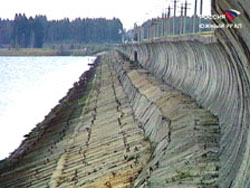 | 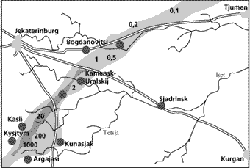 |
| One of Techensk Cascade dams. Picture from the website of Chelyabinsk State Television and Radio Company | Picture from the website of Cheljabinsk State Television and Radio Company |
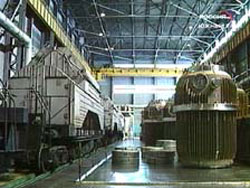 | Carriages and containers for radioactive materials transportation. Picture from the website of Chelyabinsk State Television and Radio Company |
research started later when recording began of the long-term affects of high level exposures to radiation on 124,000 residents. Around 7,500 people living along side the Techa River received significant radiation doses; those subsequently moved from 20 locations received doses of 0.03-1 Sv. The highest doses (up to 1.7 Gy) were received by the residents of the riverside village Metlino. According to official data there are 66 cases of chronic radiation sickness among the village's residents.
The radioactive waste has accumulated on the bottom of the river. The chain of polluted industrial reservoirs known as the Techen cascades occupies an area of about 70 square km and has a volume of about 380 million cubic meters.
Currently 90Sr and 137Cs are the main pollutants, while specific water activity in the basins is about 0.1-10 kBq/liter. The levels of silt pollution differ greatly from 1 up to 107 kBq/kilo. The Techa's floodplain areas (Asanovsk swamps), where silt pollution exceeds the allowable level, are ecologically dangerous.
The Karachai Lake
The polluted Karachai Lake, located on the plant's site, covers about an area of about a quarter of a square kilometre and has a volume of about 400,000 cubic metres. Currently the total radiation is estimated at 4.4 Ebq, with specific water activity of 90Sr и 137Cs being 0.06 and 0,4 GBq/liter, and soil 10 and 50 GBq/litre.
There is an estimated amount of underground water covering 30 square km with a volume of up to 4 million cubic metres. This has a high content of cesium and strontium.
Concrete panels shaped like upside-down glasses have been placed on the bottom of the lake to protect the lake's surface. From above the blocks have been covered with rocks. Currently about 70% of the reservoir's surface has been covered. A chain of drilling holes has been made around Karachai to enable continuous monitoring of soil and subsoil water pollution at various depths and distances.
The 1957 Explosion
Following the explosion at the plant in 1957, about 90 per cent of the radioactive material fell on the plant itself. The cloud, which had completely settled within 11 hours, left a trace 300 km long and between 30 and 50 km wide. This has been named the Eastern Ural Radioactive Trace (VURS). As a result of the accident about 23,000 sq km was exposed to radiation, including 217 homes. About 1,200 people were evacuated, mainly during the first day of the accident. They received radiation of 0.5 Gy. A further, 11,000 people were moved later. They received average doses of 0.2 Gy.
Radioactivity levels have now decreased 15 times since the half-life period is less than a year and most of the area was brought back within safety standards by 1982. Almost all of the land which received initial pollution of up to 4 Curie/km2 is currently being used for agriculture.
Research into radioactive ecology and biology is now being carried out in the remaining area, covering some 170 sq km, known as the Eastern Uralian Reserve. One of the world's largest centres of radiological research, a branch of the Biophysics Institute of the Russian Academy of Science, was established in Ozersk in 1953. Research has shown that the greatest impact on human health was in the early years of the plant's operation. This includes radiation sickness, high cancer rates, and thyroid gland disease in children.
Задание 2. Опираясь на тексты, заполните таблицу
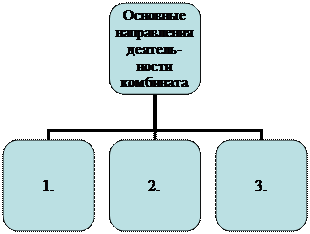
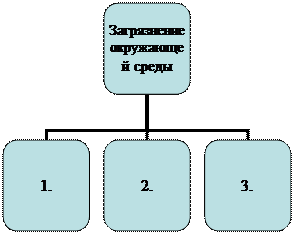
УРОВЕНЬ
Задание 1. С помощью дополнительных источников информации, заполните таблицу
| Список ученых, занимавшихся изучением радиоактивности | |
| Основные открытия 19-20 века, связанные с радиоактивностью химических элементов | |
| Список искусственных радионуклидов | |
| Список естественных радионуклидов | |
| Основные направления работы регионального предприятия, связанного с атомной промышленностью |
ГРАММАТИКА
Глагол to take
УРОВЕНЬ
Задание 1. Переведите предложения
1. You should have taken your luggage to the station beforehand. 2. Will you take everything off the table? 3. You might find out when the plane takes off. 4. We saw him take off his coat. 5. I took the girl for your sister. 6. I wonder who'll take over the job. 7. After Dr Petrov retired on a pension, Dr Lavrov took over. 8. I'm sure he'll take to his new teacher.
УРОВЕНЬ
Задание 1. Дополните предложения, используя глагол to take с предлогами
1. I wouldn't have taken him for the manager if... 2. If the two girls weren't so much alike... 3. The young teacher wouldn't have taken over... 4. If Comrade Smirnov hadn't got the new appointment... 5. If the plane weren't due to take off in five minutes... 6. I wouldn't worry... 7. If they hadn't encouraged him...
УРОВЕНЬ
Задание 1. Составьте ситуации, используя английские эквиваленты следующих выражений
этот поезд довезет меня до ...; сколько времени мне потребуется ...; ехать поездом; внести вещи в вагон; занятое место; внезапно заболеть, не обращать внимания, принимать лекарства, проходить курс лечения, проявлять интерес, принимать во внимание, принять меры, воспользоваться случаем, воспользоваться преимуществом, сфотографироваться, снять шляпу, принять кого-л. за кого-л. другого, сфотографировать еще раз, не проявлять интереса к чему-л., взять на себя ответственность, полюбить (пристраститься).
МОДУЛЬНЫЙ БЛОК №9
“COUNTRIES. PEOPLE AND THEIR LIFE”
| Лексика: | The Russian Federation. The United States of America. The United Kingdom of Great Britain and Northern Ireland |
| Грамматика: | Глаголы с предлогами |
ЛЕКСИКА
ОБУЧАЮЩИЙ МОДУЛЬ 9.1
The Russian Federation.
1 УРОВЕНЬ
Задание 1. Прочитайте и переведите текст
The Russian Federation
The Russian Federation is the largest country in the world. It occupies about one-seventh of the earth’s surface. It covers the eastern part of Europe and the northern part of Asia. Its total area is about 17 million square kilometers. The country is washed by 12 seas of 3 oceans: the Pacific, the Arctic and the Atlantic. In the south Russia borders on China, Mongolia, Korea, Kazakhstan, Georgia and Azerbaijan. In the west it borders on Norway, Finland, the Baltic States, Belorussia, and the Ukraine. It also has a sea-border with the USA.
There is hardly a country in the world where such a variety of scenery and vegetation can be found. We have steppes in the south, plains and forests in the midland, tundra and taiga in the north, highlands and deserts in the east.
There are two great plains in Russia: the Great Russian Plain and the West Siberian Lowland. There are several mountain chains on the territory of the country: the Urals, the Caucasus, the Altai and others. The largest mountain chain, the Urals, separates Europe from Asia.
There are over two million rivers in Russia. Europe’s biggest river, the Volga, flows, into the Caspian Sea. The main Siberian rivers — the Ob, the Yenisei and the Lena — flow from the south to the north. The Amur in the Far East flows into the Pacific Ocean.
Russia is rich in beautiful lakes. The world’s deepest lake (1,600 metres) is Lake Baikal. It is much smaller than the Baltic Sea, but there is much more water in it than in the Baltic Sea. The water in the lake is so clear that if you look down you can count the stones on the bottom.
Russia has one-sixth of the world’s forests. They are concentrated in the European north of the country, in Siberia and in the Far East.
On the vast territory of the country there are various types of climate, from arctic in the north to subtropical in the south. In the middle of the country the climate is temperate and continental.
Russia is very rich in oil, coal, iron ore, natural gas, copper, nickel and other mineral resources.
Russia is a parliamentary republic. The Head of State is the President. The legislative powers are exercised by the Duma.
The capital of Russia is Moscow. It is its largest political, scientific, cultural and industrial centre. It is one of the oldest Russian cities.
At present, the political and economic situation in the country is rather complicated. There are a lot of problems in the national economy of the Russian Federation. The industrial production is decreasing. The prices are constantly rising, the rate of inflation is very high. People are losing their jobs because many factories and plants are going bankrupt.
But in spite of the problems Russia is facing at present, there are a lot of opportunities for this country to become one of the leading countries in the world. I’m sure that we, the younger generation, can do very much to make Russia as strong and powerful as it used to be.
Задание 2. Прочитайте и переведите диалог
